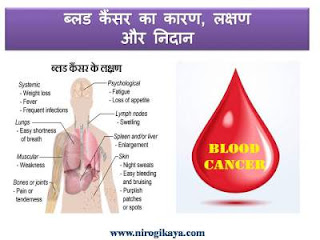Prostate Cancer: Radical Prostatectomy
is an operation to remove the and tissues surrounding it. This usually includes the seminal vesicles and some nearby lymph nodes. Radical prostatectomy can cure in men whose is limited to the prostate.
Who Should Undergo Radical Prostatectomy?
Men younger than age 75 with limited who are expected to live at least 10 more years tend to get the most benefit from radical prostatectomy.
Before performing radical prostatectomy, doctors first try to establish that the prostate cancer has not spread beyond the prostate. The statistical risk of spread can be determined from tables comparing the results of a and . Further testing for spread, if needed, can include CT scans, bone scans, scans, and .
If it appears that the prostate cancer has not spread, a surgeon (urologist) may first offer other options besides surgery. These can include , hormone therapy, or simply observing the prostate over time, since many prostate cancers grow slowly. Depending on how high the risk of cancer spread, pelvic lymph node dissection may be considered, as well.
Types of Radical Prostatectomy
The prostate gland lies just under the , in front of the rectum. Surgeons choose from two different approaches to reach and remove the prostate during a radical prostatectomy. One is a traditional approach known as open prostatectomy. The other, more recent approach is minimally invasive. There are two minimally invasive procedures used in radical prostatectomy: laparoscopic prostatectomy and robot-assisted laparoscopic prostatectomy.
Open prostatectomy
In this traditional method of radical prostatectomy, the surgeon makes a vertical 8- to 10-inch incision below the belly button. Radical prostatectomy is performed through this incision. In rare cases, the incision is made in the perineum, the space between the scrotum and .
Laparoscopic prostatectomy
In laparoscopic prostatectomy, surgeons make several small incisions across the belly. Surgical tools and a camera are inserted through the incisions, and radical prostatectomy is performed from outside the body. The surgeon views the entire operation on a video screen.
Robot-assisted laparoscopic prostatectomy
Small incisions are made in the belly, as in regular laparoscopic prostatectomy. A surgeon controls an advanced robotic system of surgical tools from outside the body. A high-tech interface lets the surgeon use natural wrist movements and a 3-D screen during radical prostatectomy.
Open Radical Prostatectomy vs. Minimally Invasive Radical Prostatectomy
In 2003, only 9.2% of radical prostatectomies were done using a minimally invasive procedure. By 2007, that number had jumped to 43.2%. In 2009, researchers in Boston reported on a study that compared outcomes, benefits, and complications of open surgery vs. minimally invasive surgery:
- No difference was found in deaths or in the need for additional therapy between the two approaches.
- The median hospital stay was two days for minimally invasive surgery and three days for open surgery.
- 2.7% of men having laparoscopic surgery required a transfusion compared with 20.8% of men having open surgery.
- There was more anastomotic stricture -- narrowing of the suture where internal body parts are rejoined -- for open surgery (14%) than for minimally invasive surgery (5.8%).
- There were fewer respiratory complications with minimally invasive surgery (4.3%) than with open surgery (6.6%).
- There were lower rates of and with open surgery. The overall rate was 4.7% for laparoscopic surgery and 2.1% for open surgery.
Risks of Radical Prostatectomy
Radical prostatectomy has a low risk of serious complications. Death or serious disability caused by radical prostatectomy is extremely rare.
Important nerves travel through the prostate on the way to the . Skilled surgeons can usually protect most of these nerves during radical prostatectomy. Still, complications from inadvertent do occur after radical prostatectomy. They include:
- : More than 95% of men younger than age 50 are continent after radical prostatectomy. Around 85% of men aged 70 or older maintain continence after the operation.
- (ED): Problems with erections are common after prostatectomy. Still, most men are able to have after prostatectomy while using medicines for ED (such as Viagra or ), an external pump, or injectable . The younger the man, the higher the chance of maintaining potency after prostatectomy. A period of penile rehabilitation is often necessary.
Much of the skill involved in radical prostatectomy centers on sparing these nerves during the operation. A man undergoing radical prostatectomy by a surgeon at an advanced prostate cancer center has a better chance of maintaining sexual and urinary function.
Other complications of radical prostatectomy include:
- Bleeding after the operation
- Urinary leaks
- Infection
- Poor wound healing
- Narrowing of the urethra, blocking urine flow
Less than 10% of men experience complications after prostatectomy, and these are usually treatable or short-term.

Comments
Post a Comment